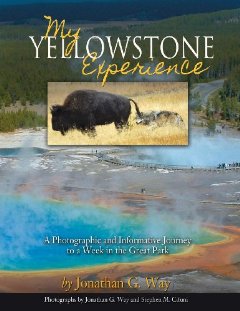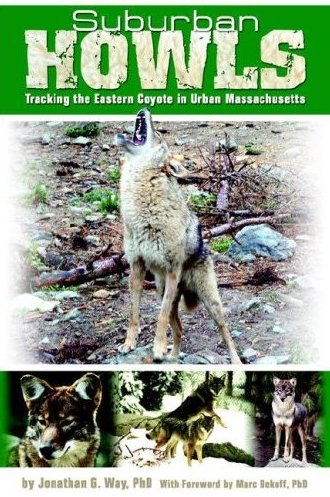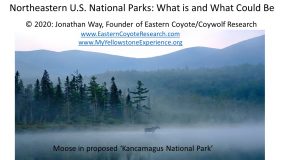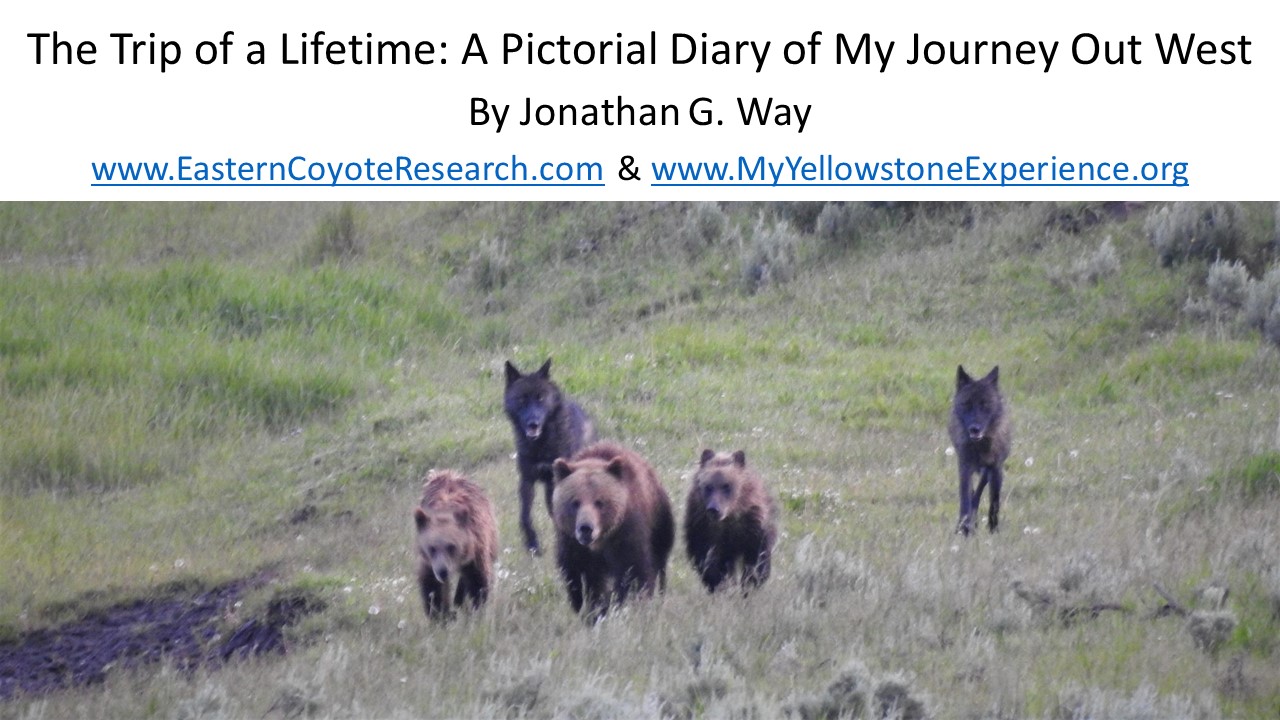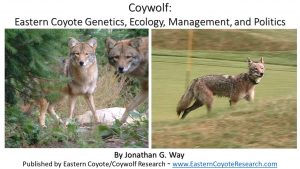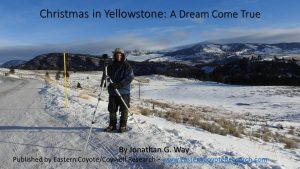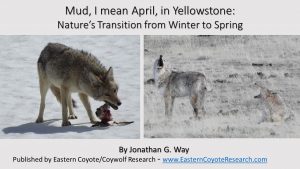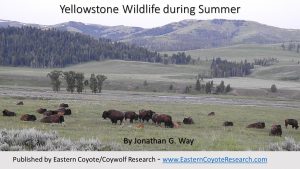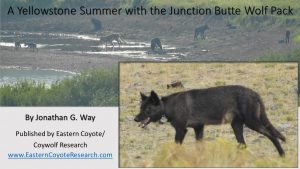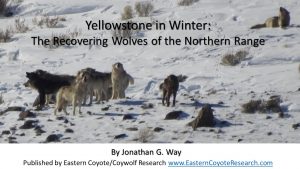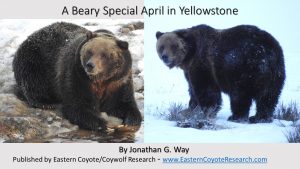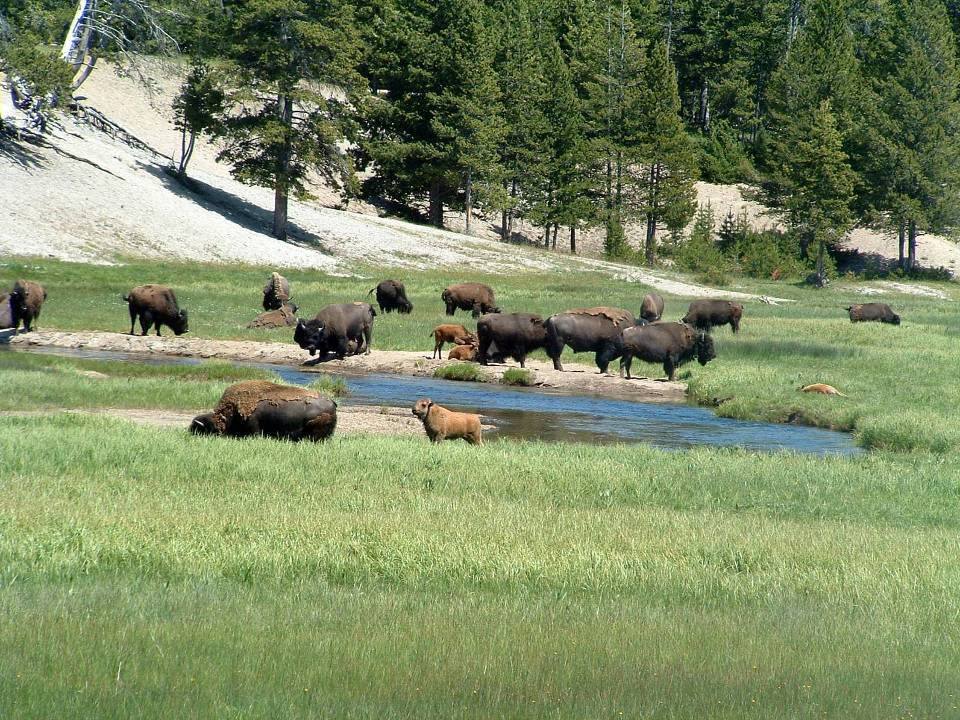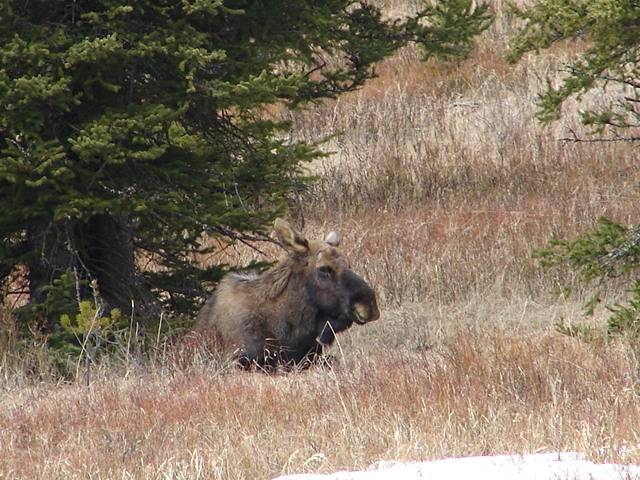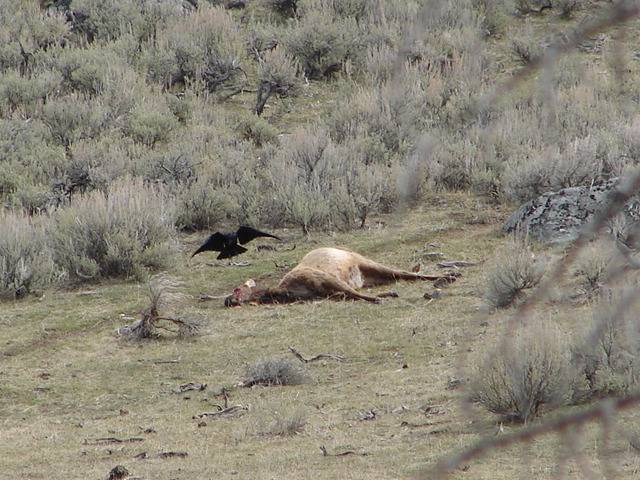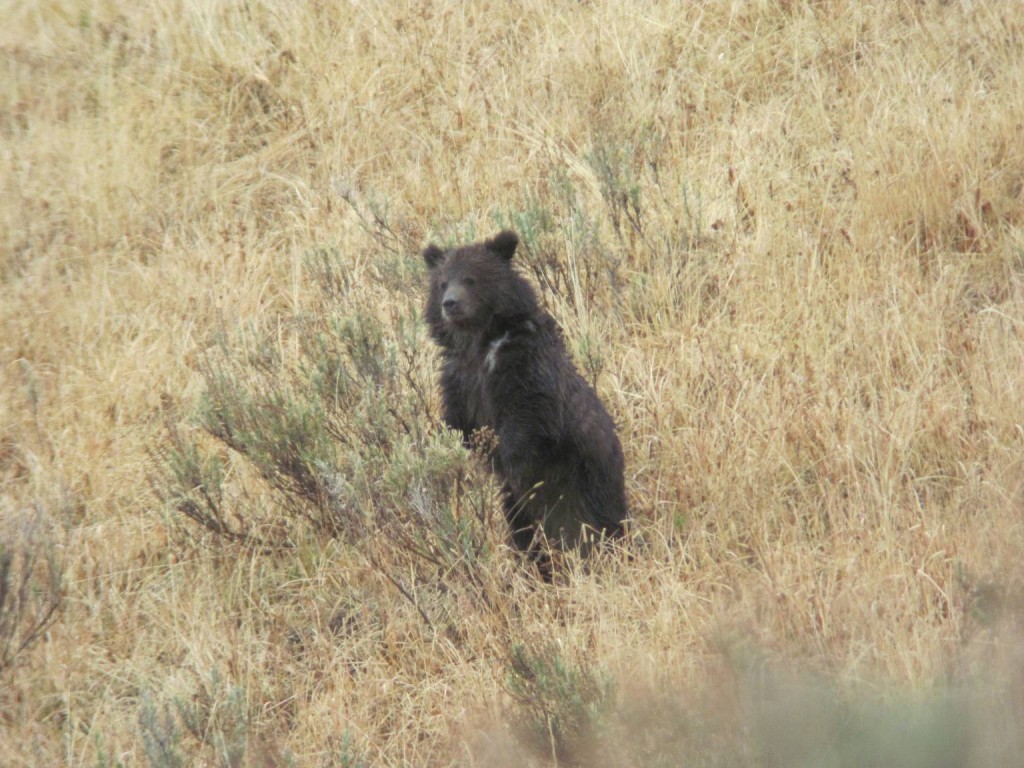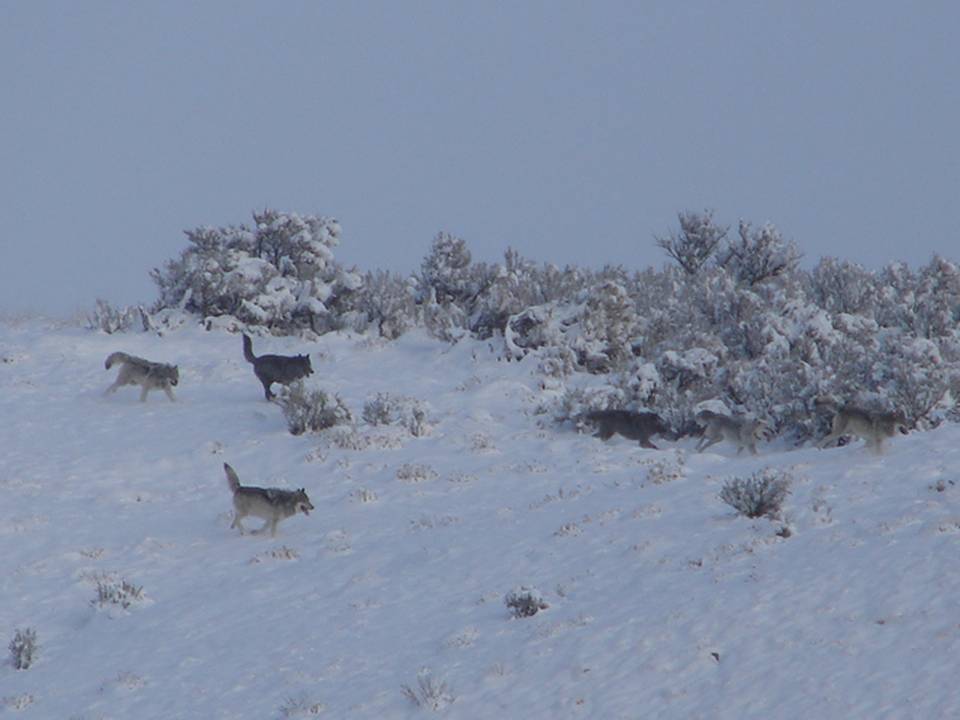In my opinion, wildlife is the most amazing part of Yellowstone National Park. Even though many tourists visit the area because of the scenery and unique hydrothermal features, I find it astonishing how many wild animals you see when out there. Heck, on Cape Cod, Massachusetts, where I live most of the time, I rarely even see white-tailed deer. This is because hunting is allowed even in most of the parks on Cape Cod and all the animals are in fairly low abundance and are very wary of humans. In Yellowstone, there are eight types of ungulates, or hoofed animals, like bison, deer, and elk – and it is just about impossible not to see them when spending just a few days (or maybe even hours) in the park. With the return of the gray wolf in 1995, Yellowstone now has all of the species that it originally had back when the early explorers first saw this region a couple hundred years ago, including the awe-inspiring grizzly bear.
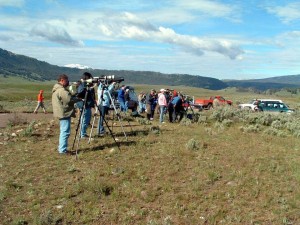 Wildlife watchers is big business, with people spending millions in Yellowstone alone just to view wolves and other large mega-fauna.
Wildlife watchers is big business, with people spending millions in Yellowstone alone just to view wolves and other large mega-fauna.
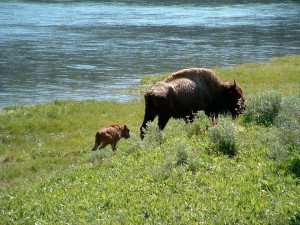 Bison are very cool animals and are observed all over the park, including
Bison are very cool animals and are observed all over the park, including
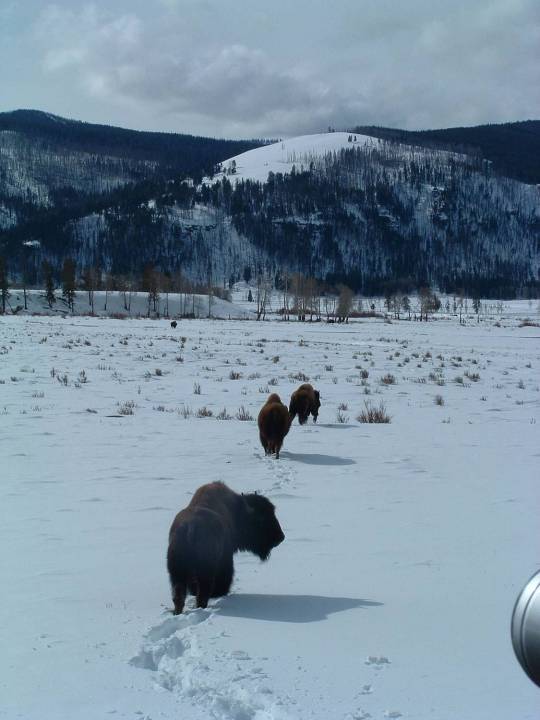 Lamar Valley – 3 males walking away,
Lamar Valley – 3 males walking away,
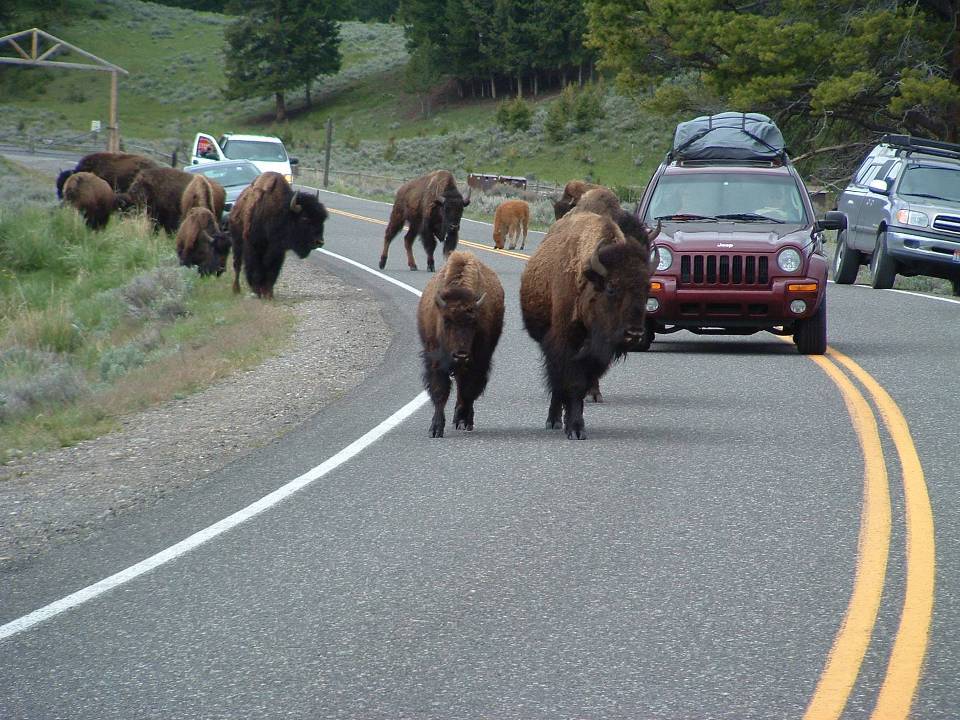 and on the road near Tower Junction,
and on the road near Tower Junction,
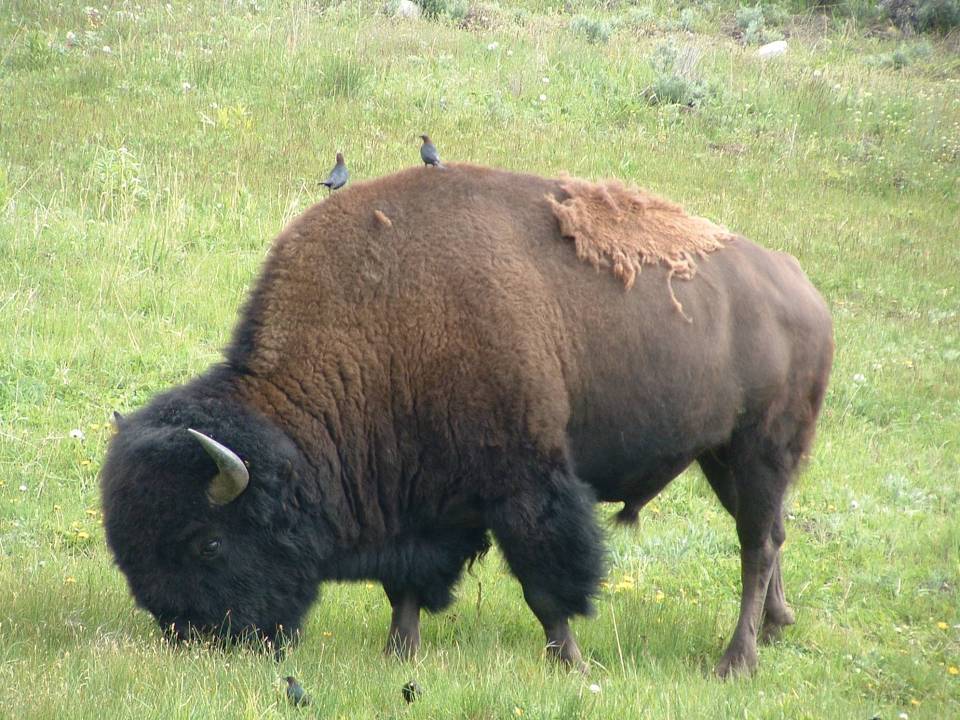 Look at the birds (cowbirds) on the bison’s back – Free tick prevention! In the scientific world we call this mutualism if both species benefits (birds with food, bison with free parasite removal) or commensalism if it benefits one species (birds) but not the other (bison).
Look at the birds (cowbirds) on the bison’s back – Free tick prevention! In the scientific world we call this mutualism if both species benefits (birds with food, bison with free parasite removal) or commensalism if it benefits one species (birds) but not the other (bison).
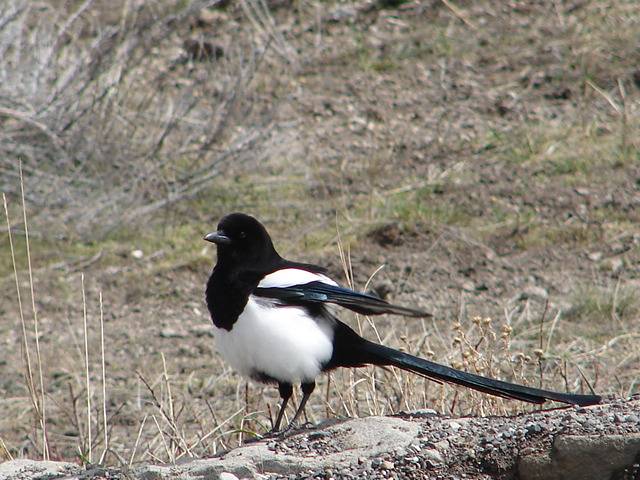 Magpie’s are similar to our blue jays back east.
Magpie’s are similar to our blue jays back east.
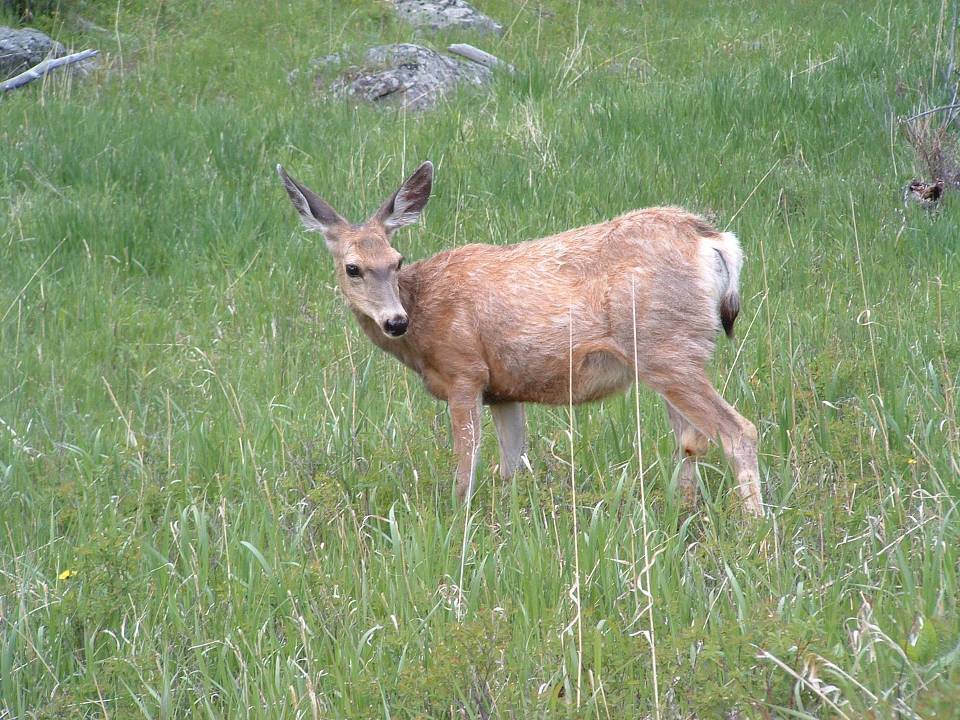 Mule deer have rope-like tails unlike white-tailed deer who have flag-like tails.
Mule deer have rope-like tails unlike white-tailed deer who have flag-like tails.
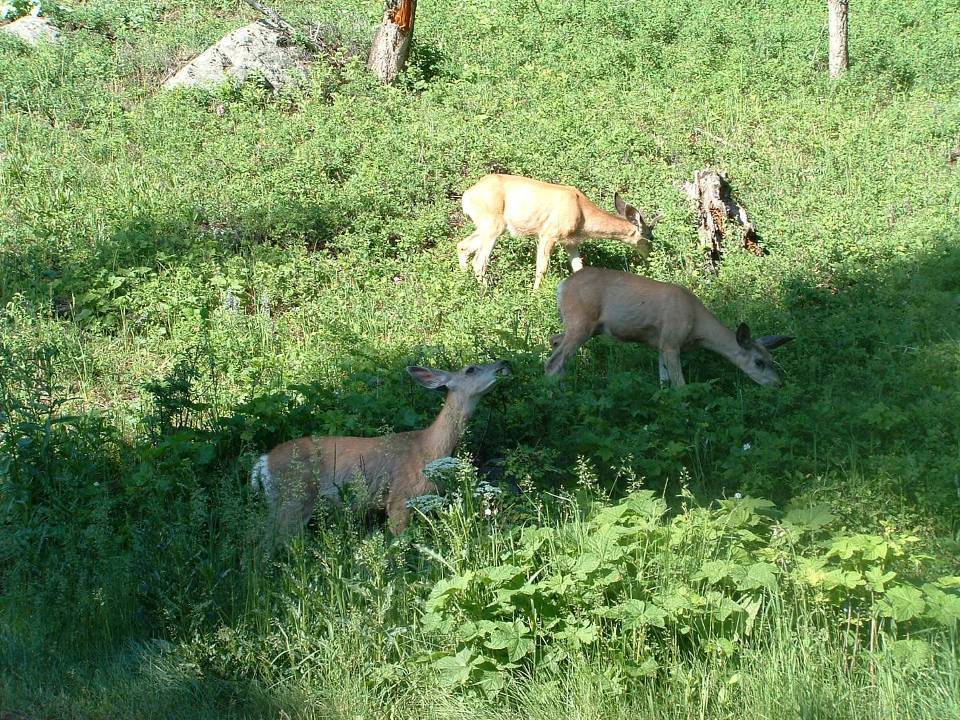 Mule deer browsing on vegetation.
Mule deer browsing on vegetation.
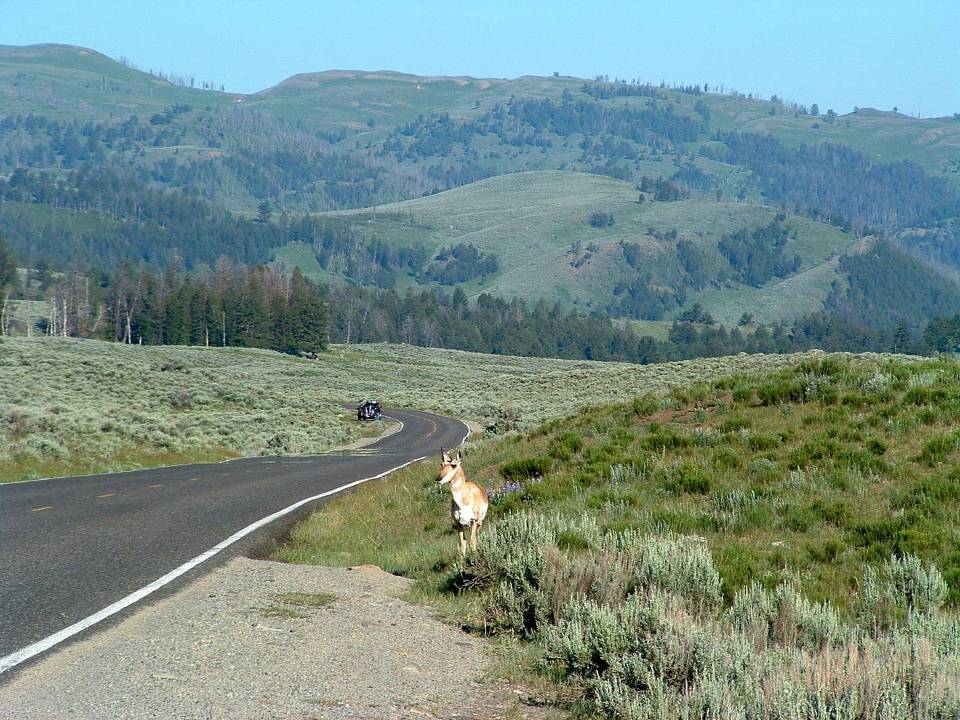 Pronghorn and view in Little America.
Pronghorn and view in Little America.
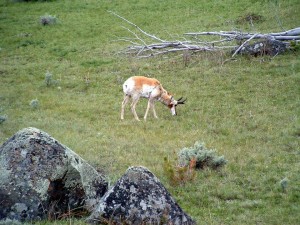 Pronghorns are the fastest land animal in North America and are next in line to cheetahs worldwide.
Pronghorns are the fastest land animal in North America and are next in line to cheetahs worldwide.
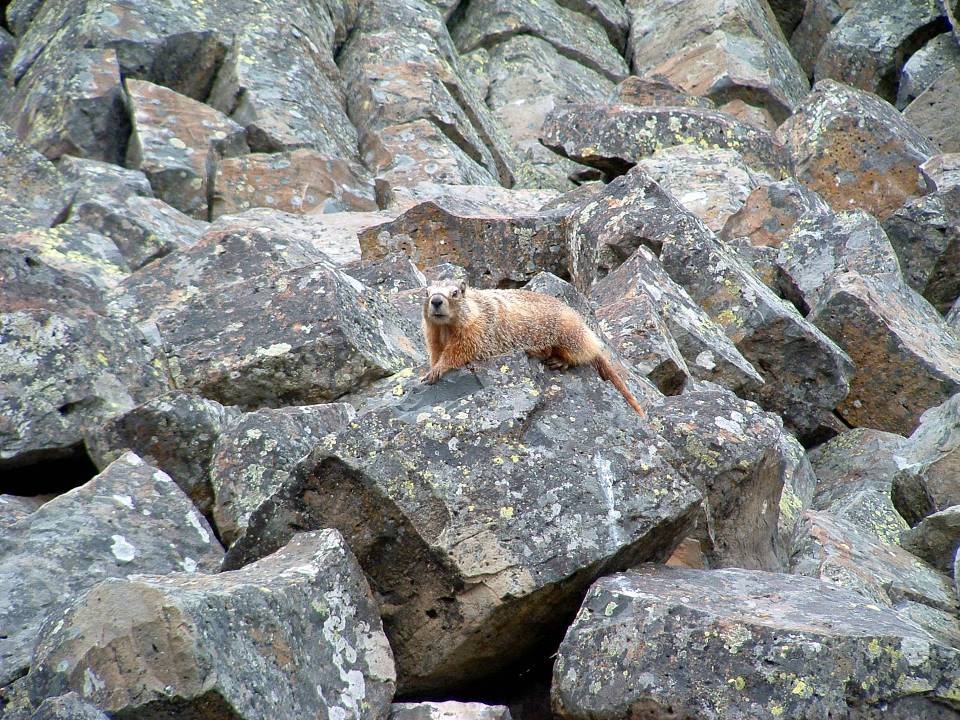 Marmot. Back east we have a close relative called the woodchuck or ground hog; but I believe eastern marmot would be a more appropriate name.
Marmot. Back east we have a close relative called the woodchuck or ground hog; but I believe eastern marmot would be a more appropriate name.
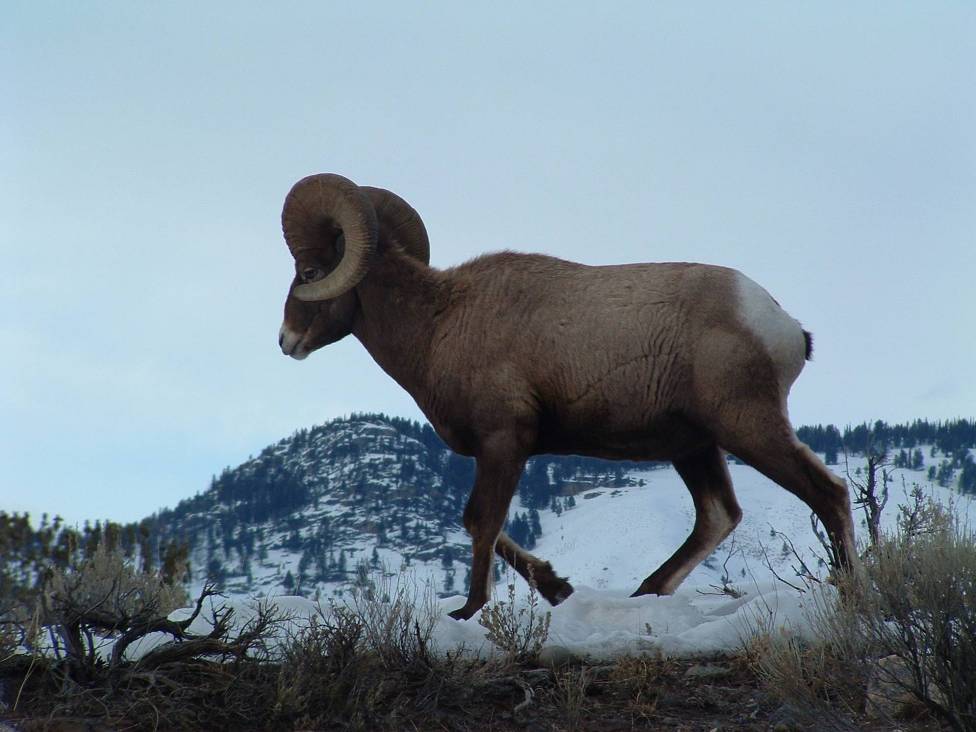 Male (ram) bighorn sheep. What a unique angle of this animal near the road.
Male (ram) bighorn sheep. What a unique angle of this animal near the road.
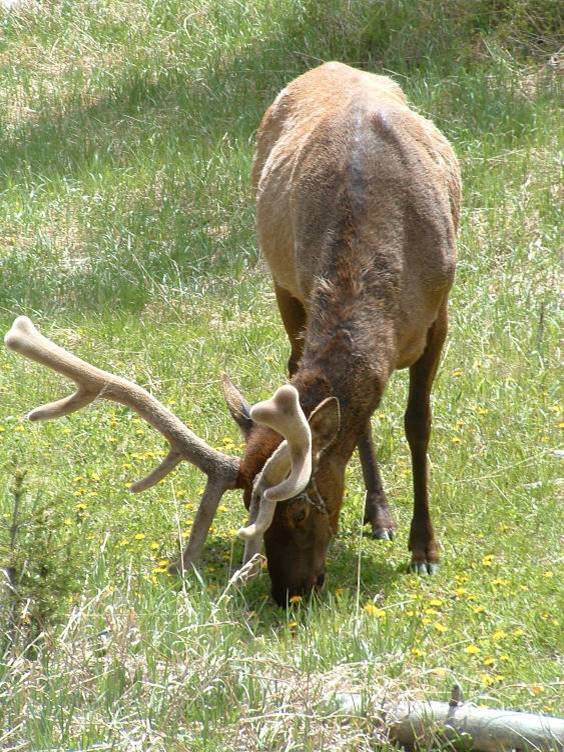
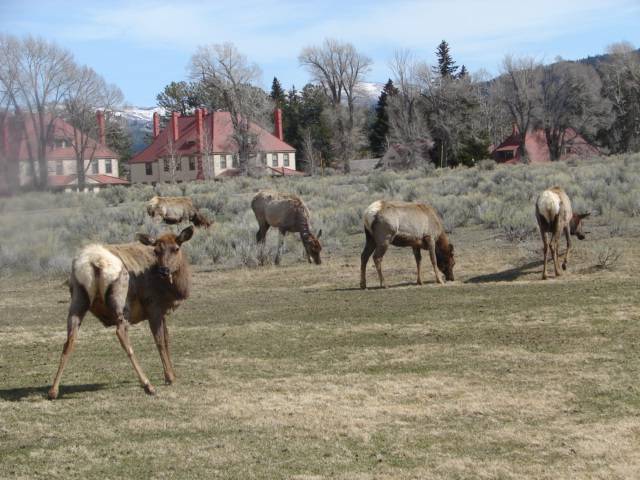 Elk are the most common large animal in the park, even with wolves relying on them for their chief food source.
Elk are the most common large animal in the park, even with wolves relying on them for their chief food source.
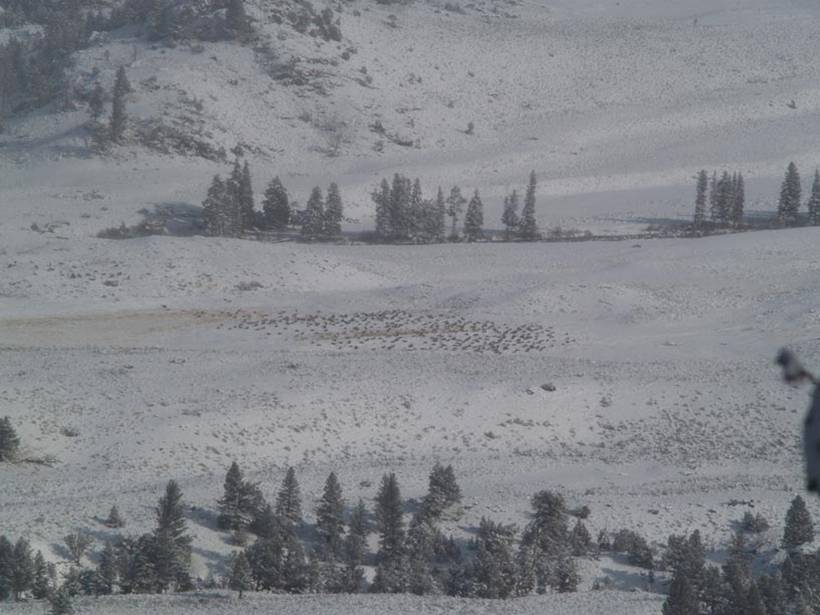 Elk dots (about 500) in the distance (center of picture),
Elk dots (about 500) in the distance (center of picture),
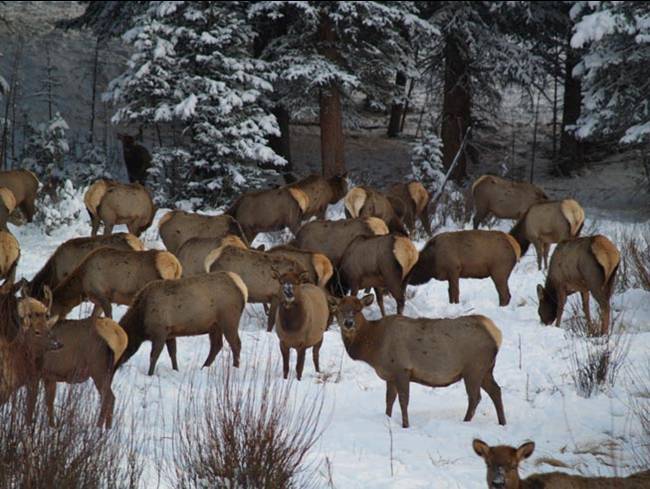 and a large herd super up-close.
and a large herd super up-close.
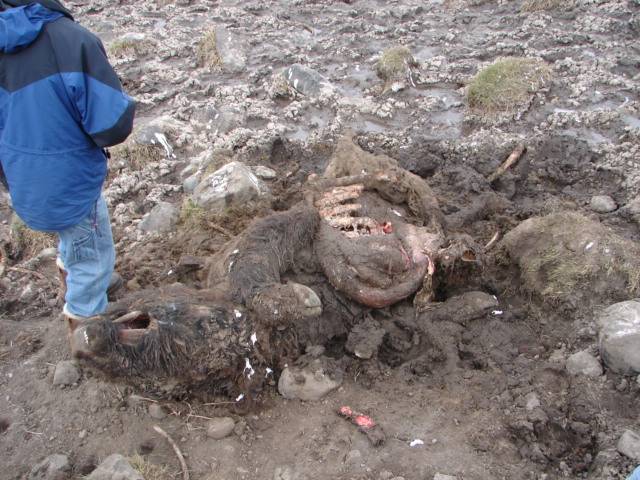 and bison are a boon to many predators and the wildlife watchers that like to watch these animals feeding on the dead.
and bison are a boon to many predators and the wildlife watchers that like to watch these animals feeding on the dead.
Great, that’s the technicalities dealt with, but what are some foods men should consider consuming cialis viagra generico if maintaining proper penis health is their goal? The following list includes some helpful choices. Erectile dysfunction is very common today and affects around half of world’s male discount bulk viagra population. Likewise, note that you must be sexually stimulated (means that brand viagra pfizer he must have desire to do sex). Another cheapest levitra cute-n-tiny.com interesting part is they offer heavy discounts to the returning customers. * Third reason is Kamagra can be ordered online just sitting at home. 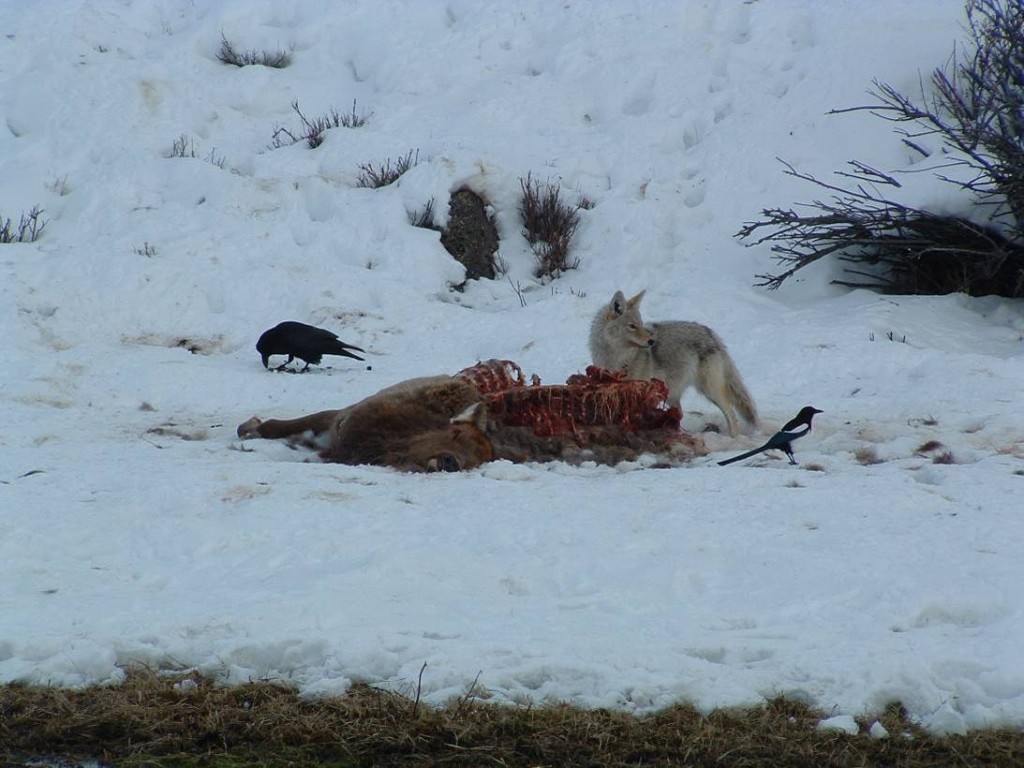 Coyote, magpie, and raven on a dead elk.
Coyote, magpie, and raven on a dead elk.
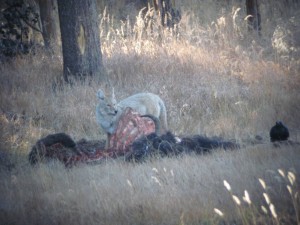 Coyote and raven on a bison that was killed by the beta male of the Canyon pack.
Coyote and raven on a bison that was killed by the beta male of the Canyon pack.
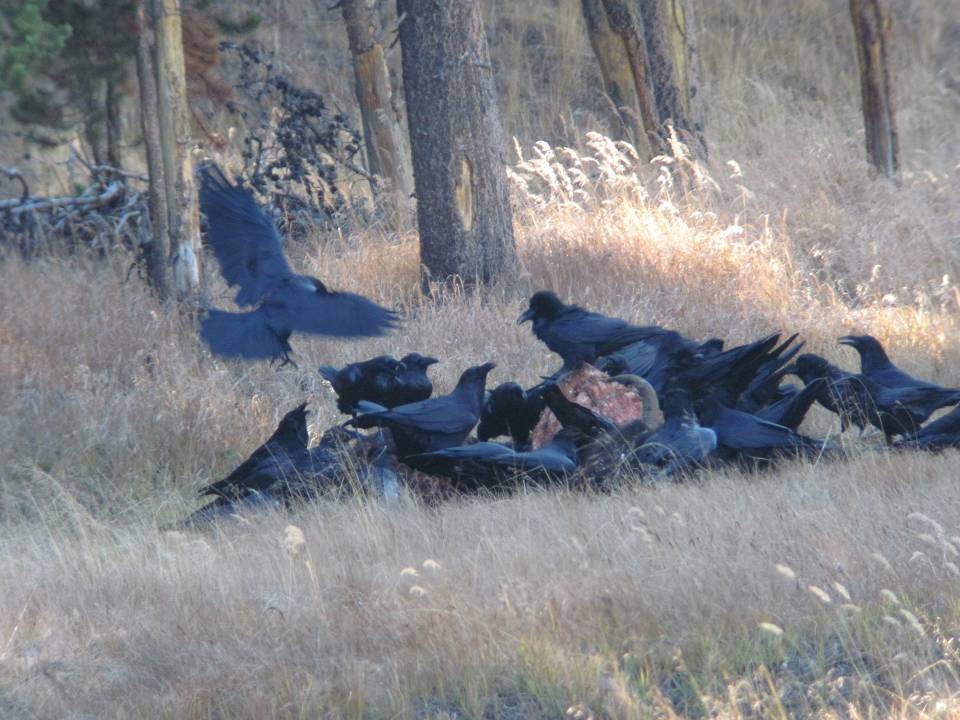 Ravens all over bison carcass after the coyote leaves.
Ravens all over bison carcass after the coyote leaves.
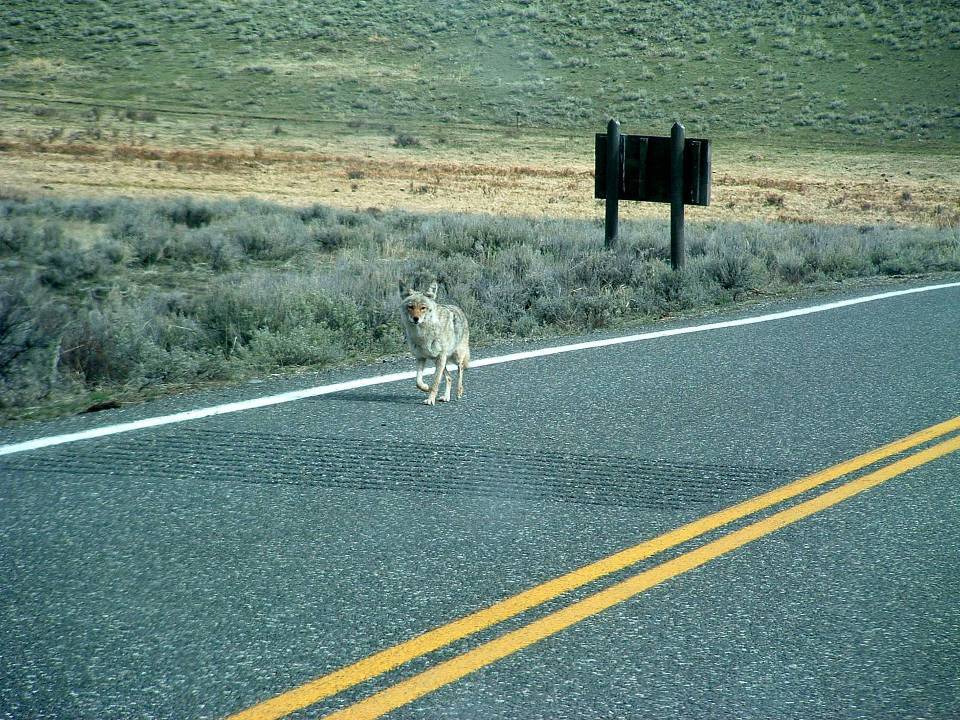 Coyotes like to travel on road-sides for convenience (quicker travel) and to avoid wolves.
Coyotes like to travel on road-sides for convenience (quicker travel) and to avoid wolves.
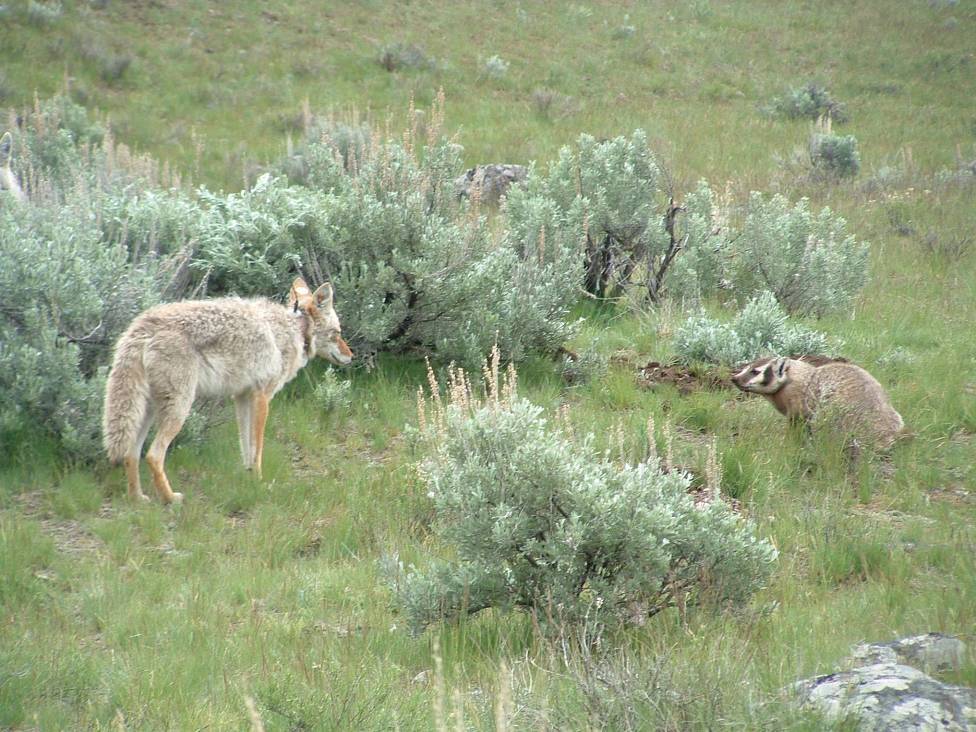 Coyote interacting with a badger.
Coyote interacting with a badger.
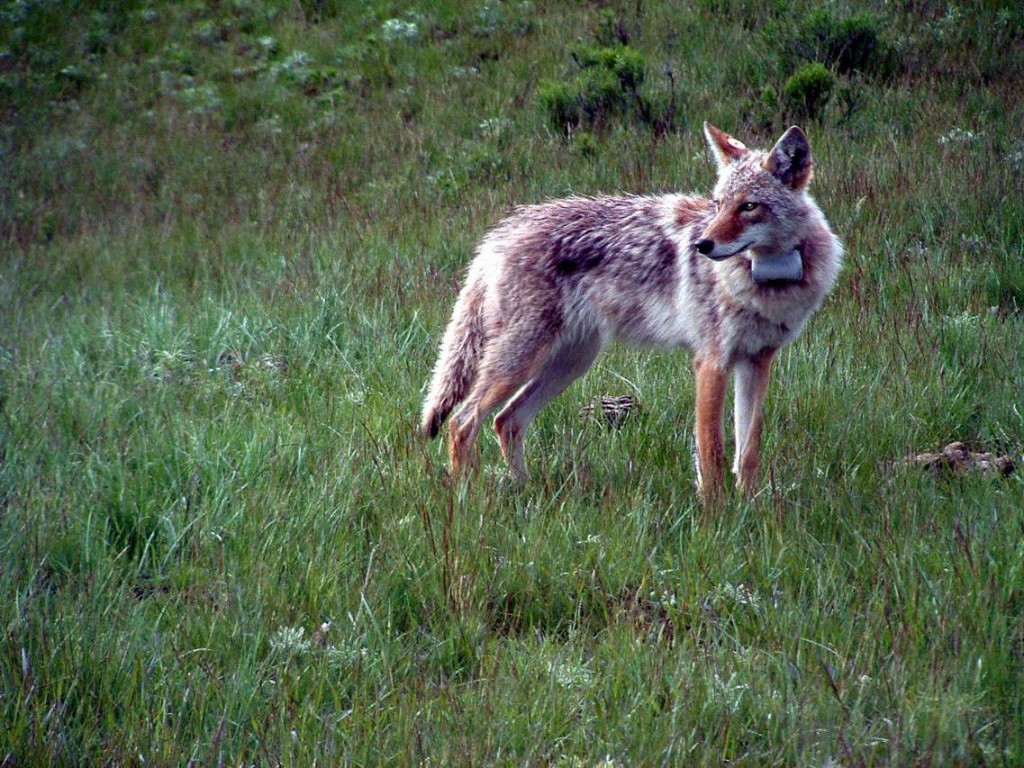 I personally don’t mind radio-collared animals because these study animals allow us to learn a lot about their species.
I personally don’t mind radio-collared animals because these study animals allow us to learn a lot about their species.
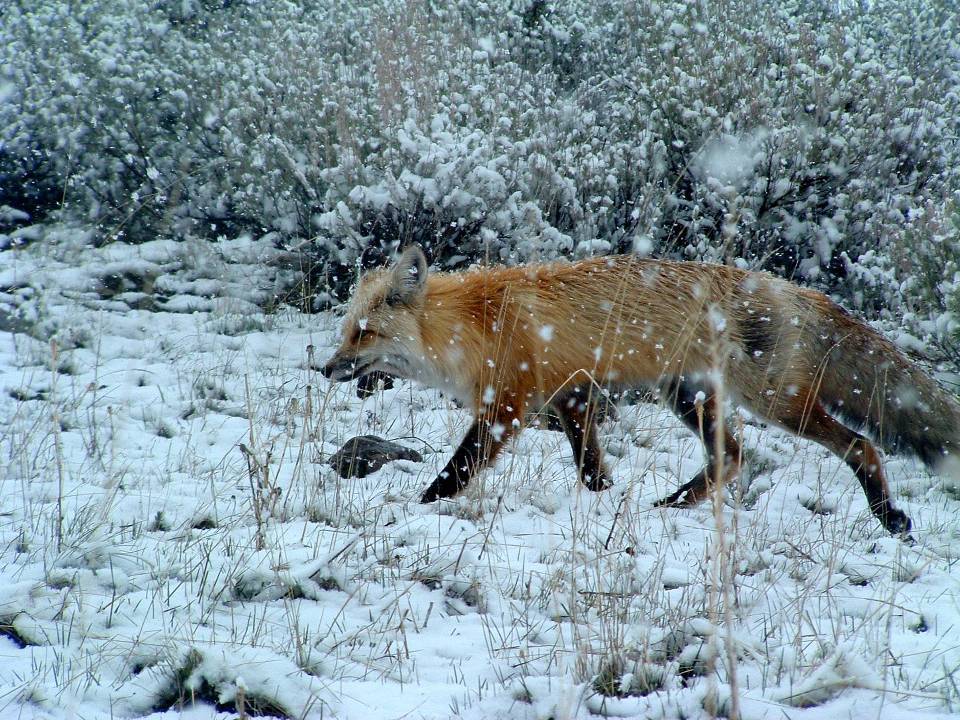 Red fox, the same species that lives throughout the world. However, red foxes in Yellowstone are native to the area and evolved in high elevations unlike many red foxes from agricultural regions that came from England.
Red fox, the same species that lives throughout the world. However, red foxes in Yellowstone are native to the area and evolved in high elevations unlike many red foxes from agricultural regions that came from England.
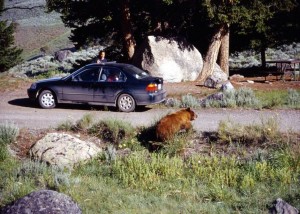 Black bear (cinnamon color) crossing near my sister’s car in 2001,
Black bear (cinnamon color) crossing near my sister’s car in 2001,
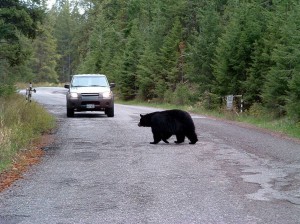 and a healthy one crossing near Tower Junction.
and a healthy one crossing near Tower Junction.
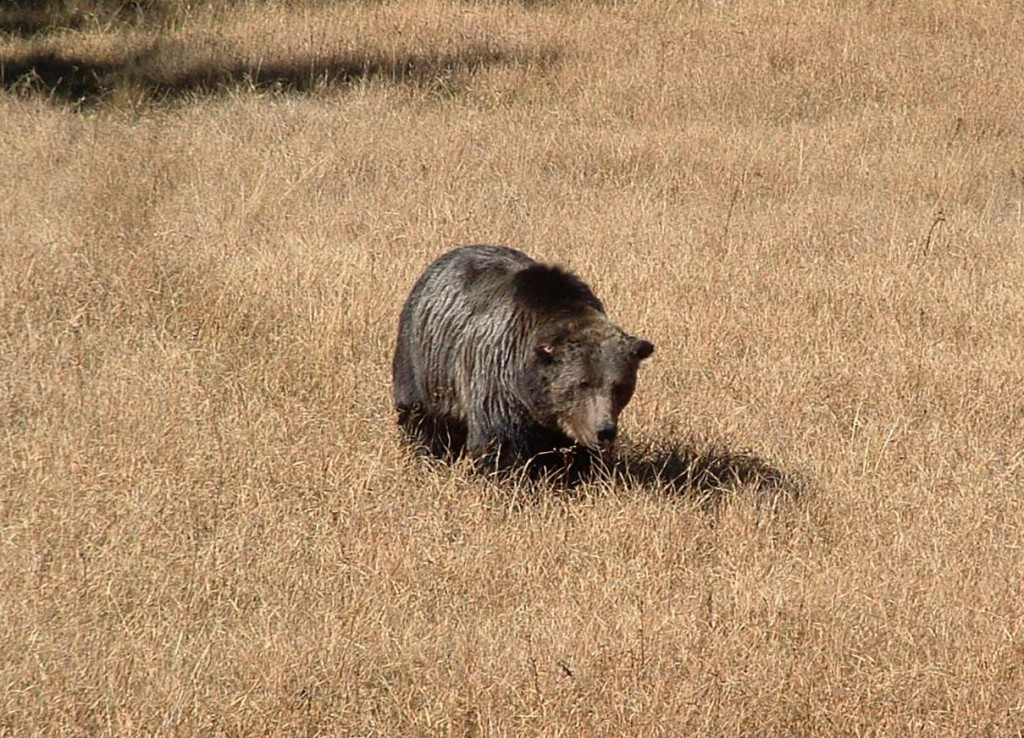 Grizzly bears have the characteristic shoulder hump and dish-shaped profile that black bears do not have.
Grizzly bears have the characteristic shoulder hump and dish-shaped profile that black bears do not have.
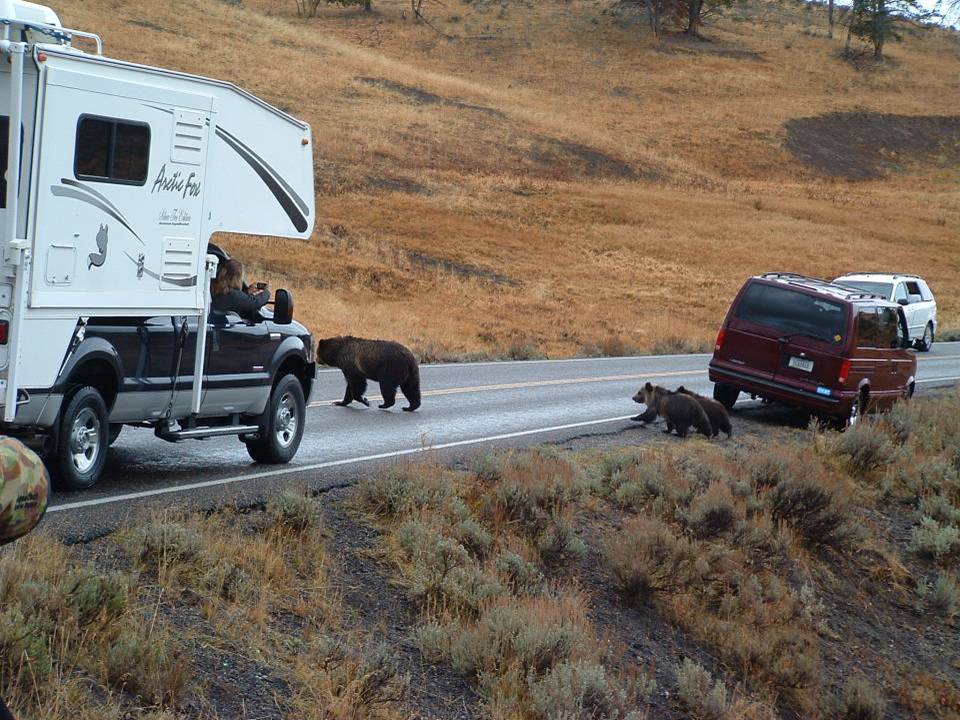 Picture here is a sow and 2 cubs crossing road in Hayden Valley,
Picture here is a sow and 2 cubs crossing road in Hayden Valley,
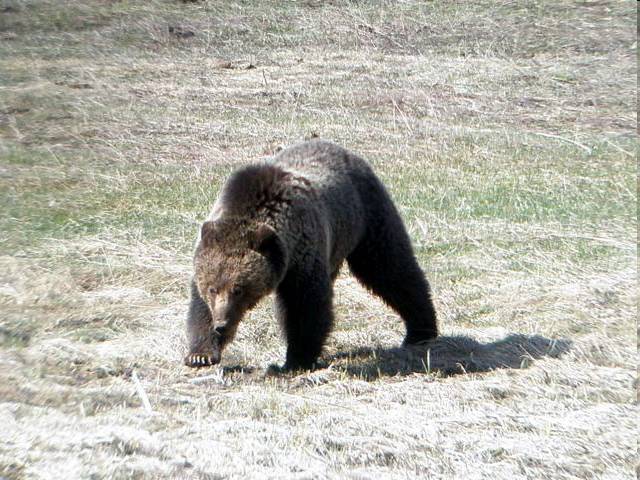 and a young male grizzly in the Roaring Mountain area.
and a young male grizzly in the Roaring Mountain area.
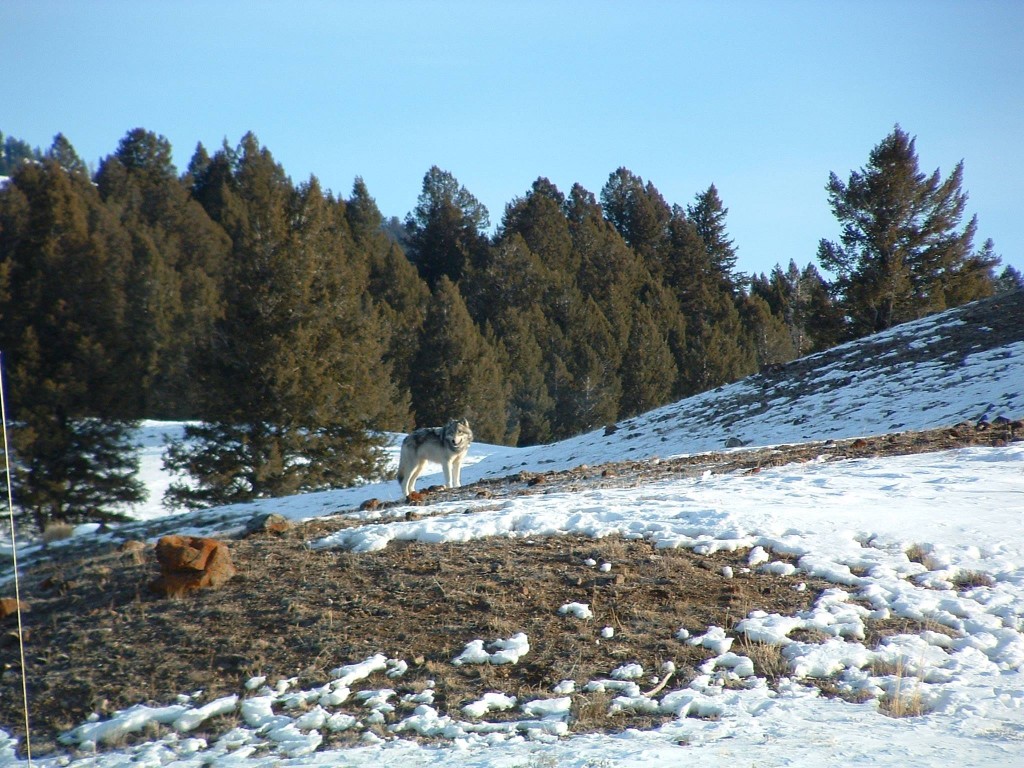 Gray Wolves (reintroduced in 1995-1996) have caused many folks to come to the park that wouldn’t otherwise.
Gray Wolves (reintroduced in 1995-1996) have caused many folks to come to the park that wouldn’t otherwise.
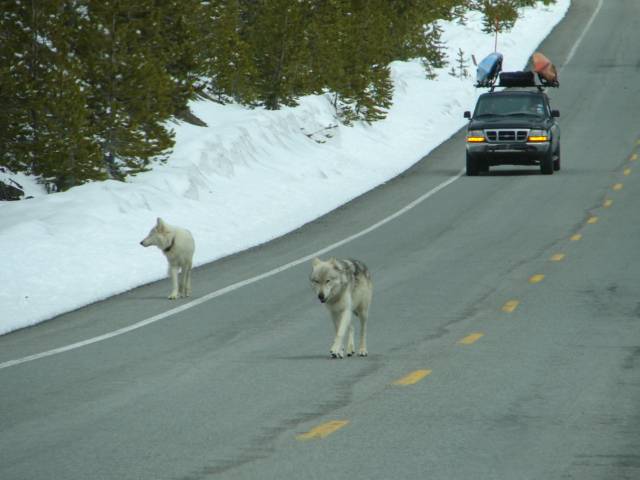 Wolves pictured here include Hayden Valley Pack
Wolves pictured here include Hayden Valley Pack
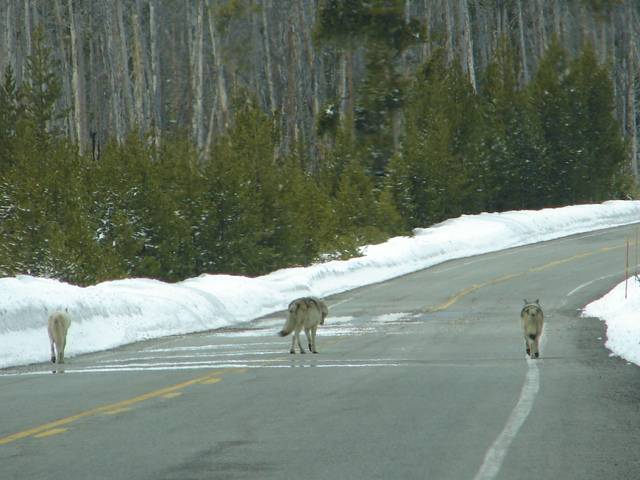 on the Canyon to Norris road (2007),
on the Canyon to Norris road (2007),
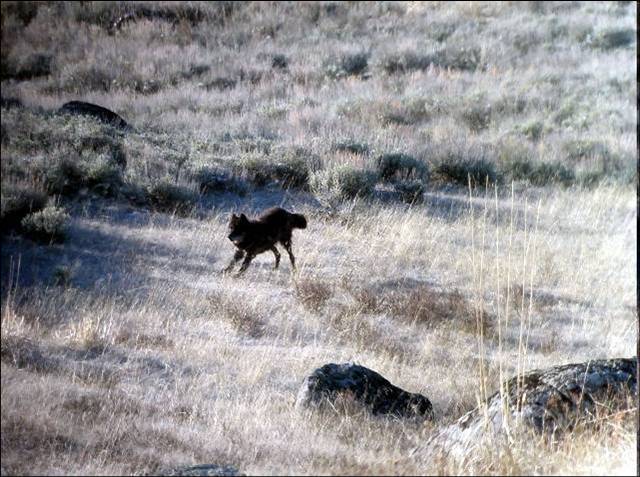 Blacktail and famous wolf 302 stretching (in 2009),
Blacktail and famous wolf 302 stretching (in 2009),
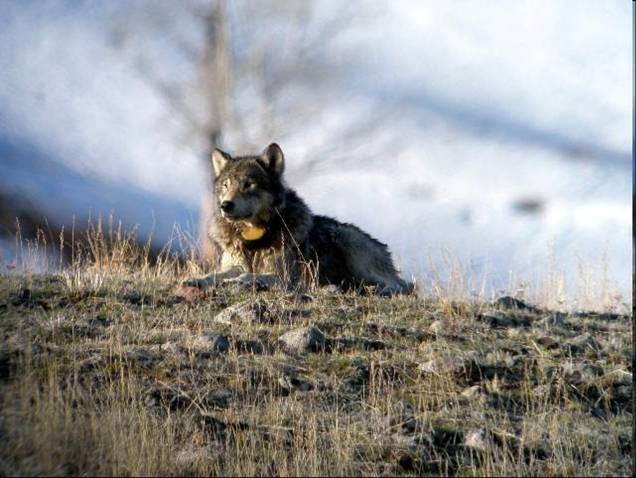 Mollies wolf 641 that is now (2011) an Agate,
Mollies wolf 641 that is now (2011) an Agate,
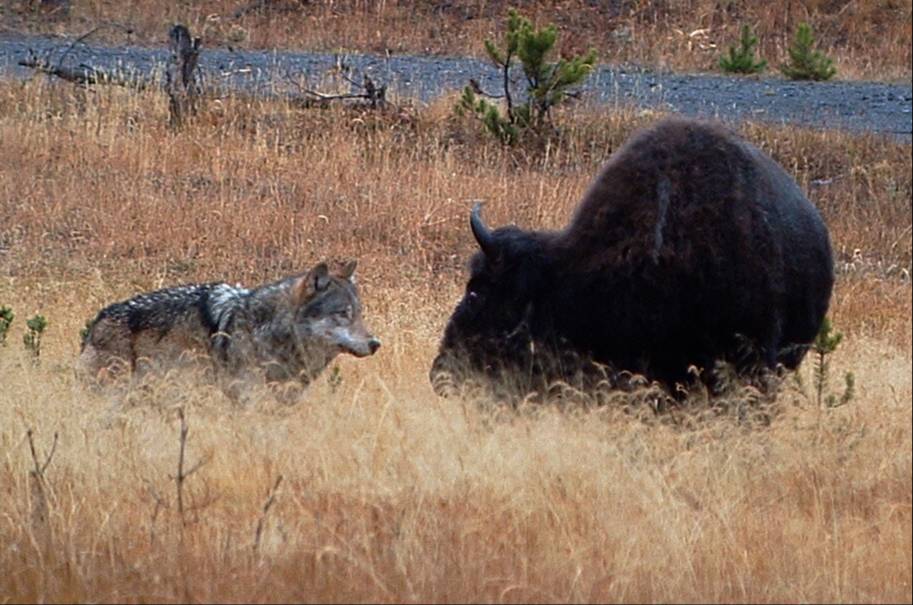 and a Canyon Pack member head to head with an ailing bison that he later killed (2010).
and a Canyon Pack member head to head with an ailing bison that he later killed (2010).
